Mini Goldendoodle vs Maltipoo: Key Differences to Consider
You want a midsize dog with gorgeous curls that don’t shed much or at all, and a charming personality that will fit your family. Both the Mini Goldendoodle and the Maltipoo are prime candidates, but which is best for your unique situation?
We’ll break down every detail of the differences between these breeds so you can choose the one that’ll steal your heart and fit in your home.
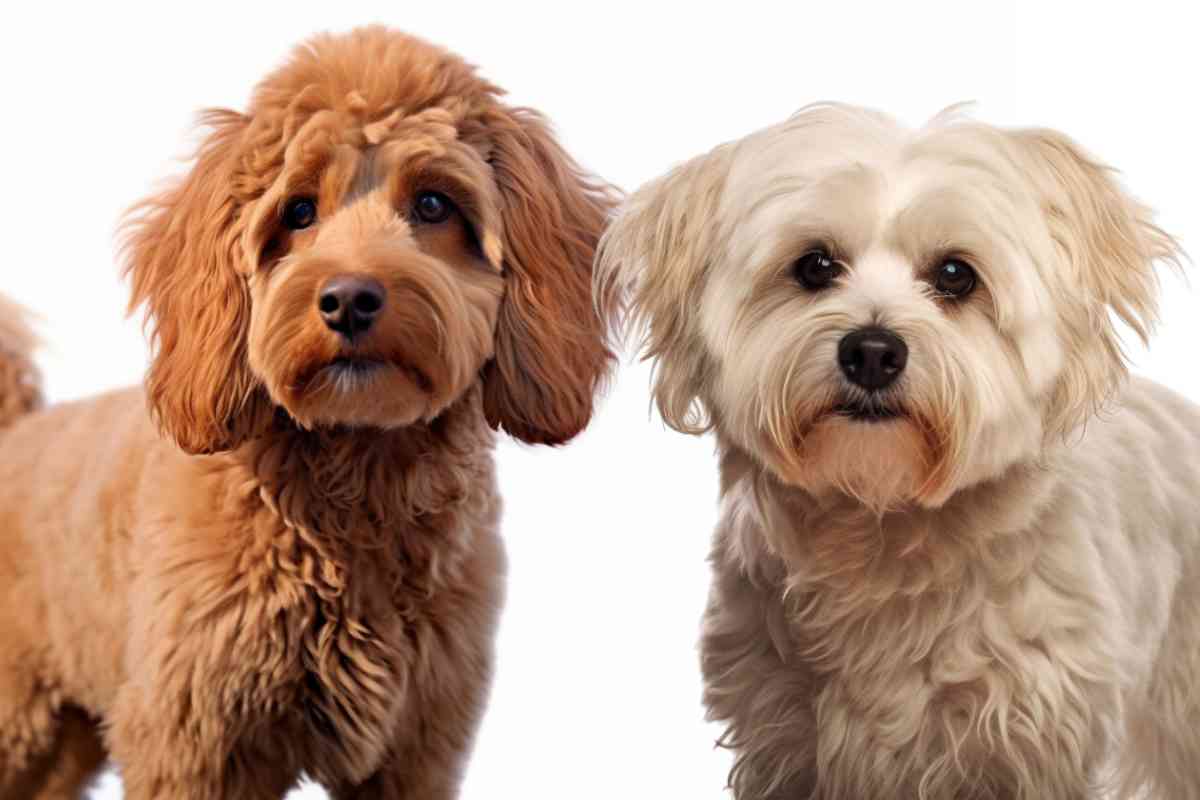
Mini Goldendoodle vs Maltipoo
Goldendoodles, with their larger size and eager-to-please nature, are particularly well-suited for families with children and those who have ample space for play. Their friendly demeanor and resilience make them thrive in active, lively environments. Maltipoos, with their smaller stature and more independent disposition, are ideal for individuals, couples, or families living in apartments or homes with limited space.
Trying to decide whether the Maltipoo or the Mini Goldendoodle is right for you? Make sure to check out other doodle breeds like the Labradoodle or the Bernedoodle.

Comparison Summary of Mini Goldendoodles and Maltipoos
| Feature/Aspect | Mini Goldendoodle | Maltipoo |
|---|---|---|
| Base Breeds | Golden Retriever, Poodle | Maltese, Poodle |
| Size | 15 to 35 pounds, 15 to 20 inches tall | 5 to 12 pounds (with Toy Poodle), 8 to 10 inches tall, 10 to 15 pounds (with Miniature Poodle), 10 to 14 inches tall |
| Temperament | Positive Traits: Intelligence, Friendliness, Loyalty Negative Traits: Hyperactivity, Sensitivity | Positive Traits: Affectionate, Intelligence, Playfulness Negative Traits: Sensitivity, Stubbornness, Barking |
| Trainability | Highly trainable and stable, Quick learners | Independent, Selective in training |
| Exercise Needs | Active engagement, Longer walks and play sessions | Less intense activity, Regular walks |
| Health Concerns | Hip dysplasia, Eye disorders, Heart issues | Patellar luxation, Progressive retinal atrophy, Legg-Calvé-Perthes Disease |
| Coat Characteristics | Varying levels of shedding, Wavy curls to flat coat | Minimal shedding, Wavy curls to silky coat |
| Grooming Needs | Intensive daily brushing, Monthly trims | Daily brushing, Monthly clips |
| Ideal for | Families with children, Those ready for training and companionship | Apartment living, Individuals or families with less time for training |
The Base Breeds
Both Goldendoodles and Maltipoos are hybrids, or mixes, of two separate breeds. Understanding where they come from is the first step to choosing one. Let’s start with what they have in common, the Poodle:
The Poodle, whether it’s Standard, Miniature, or Toy, stands as a true aristocrat in the canine world. Recognized for their curly, low-allergen coat, Poodles are not just about looks.
Beneath that sophisticated exterior lies an elegant athlete and a versatile companion. Poodles are eager, athletic, and incredibly intelligent.
Now, let’s delve into the other parent breeds you’re considering:
The Maltese is a symbol of luxury that dates back to biblical times. This toy breed, weighing less than seven pounds, boasts a distinctive all-white, silky coat that elegantly flows with its movement.
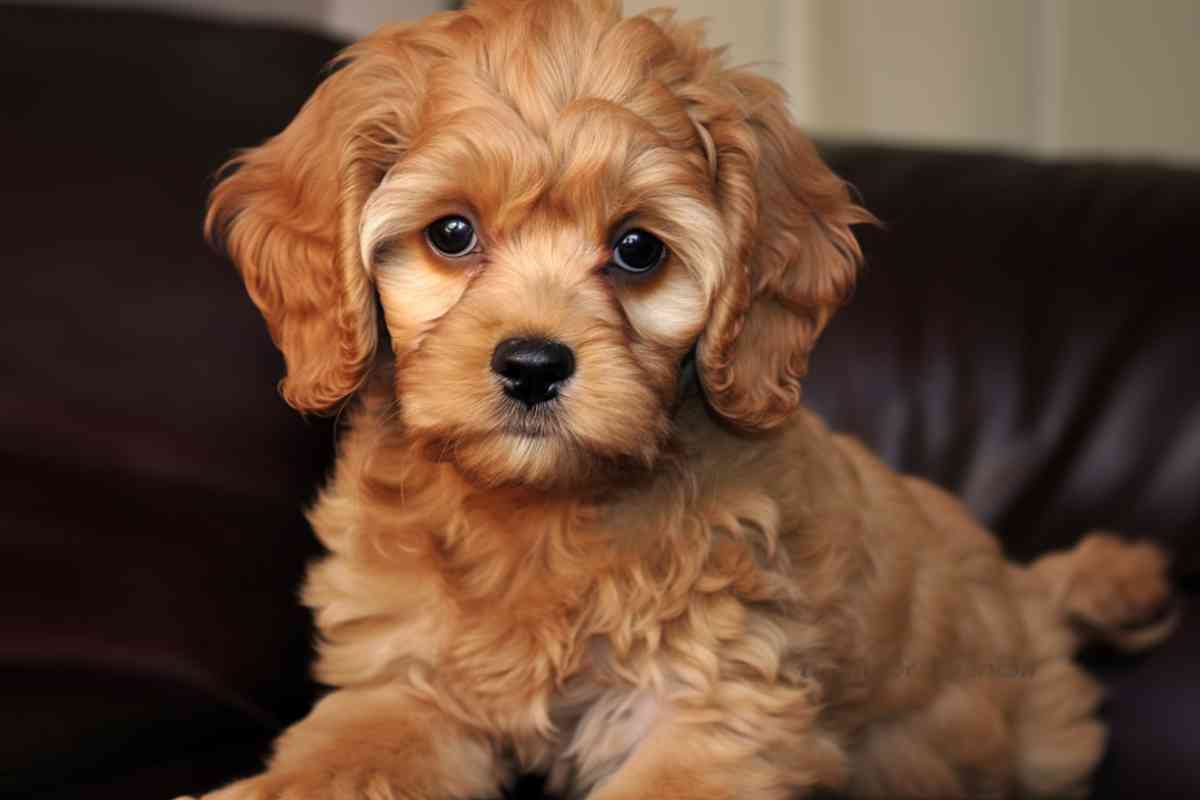
Their captivating face, marked by large, dark eyes and a contrasting black gumdrop nose, is a testament to their aristocratic lineage. Beyond their regal appearance, Maltese dogs are playful, charming, and adaptable, making them perfect companions for individuals and families alike.
Despite their elite status, they’re hardy and adaptable, serving as alert watchdogs.
The Golden Retriever is America’s most beloved dog breed. Their popularity isn’t just due to their radiant appearance; it’s their versatility and endearing personality that truly sets them apart.
These dogs are diligent workers, excelling in hunting, field work, and even roles as guides for the visually impaired. Their skills don’t stop there; they’re also involved in search-and-rescue missions and shine in obedience competitions. But when the workday is done, Golden Retrievers are all about enjoying life, showcasing an infectious zest for living.
Size
A Mini Goldendoodle is typically the result of breeding a Golden Retriever with a Miniature Poodle. On average, Mini Goldendoodles weigh between 15 to 35 pounds and stand about 15 to 20 inches tall.
On the other hand, a Maltipoo is commonly bred by pairing a Maltese with a Toy or Miniature Poodle. When bred with a Toy Poodle, Maltipoos usually weigh between 5 to 12 pounds and stand around 8 to 10 inches tall. If a Miniature Poodle is involved, the Maltipoo might weigh between 10 to 15 pounds and stand about 10 to 14 inches tall.
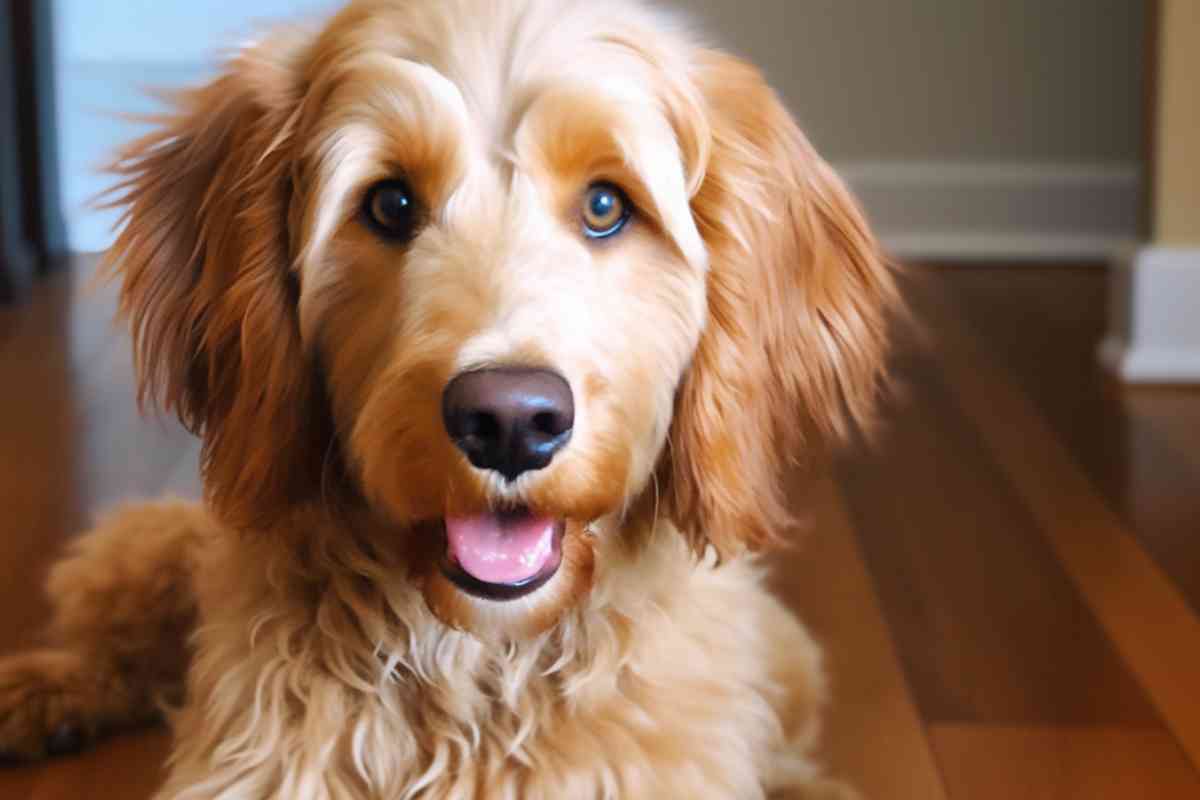
Temperament
Mini Goldendoodles
Positive Traits:
- Intelligence: Both Golden Retrievers and Poodles are known for their intelligence. A Mini Goldendoodle may inherit this trait, making them quick learners and easy to train.
- Friendliness: Golden Retrievers are renowned for their friendly and tolerant attitude. If a Mini Goldendoodle leans more towards its Golden Retriever parentage, it might be exceptionally friendly and great with kids and other pets.
- Loyalty: Both parent breeds are known for their loyalty and devotion to their families. A Mini Goldendoodle might be a very loyal companion, always eager to be by your side.
Negative Traits:
- Hyperactivity: Golden Retrievers, especially when young, can be quite hyperactive. If a Mini Goldendoodle inherits this trait, it might require a lot of exercises and mental stimulation to keep it from becoming bored and destructive.
- Sensitivity: Poodles can be overly sensitive to their surroundings and changes in their environment. A Mini Goldendoodle with this trait might be more prone to anxiety or nervousness, especially in unfamiliar situations.
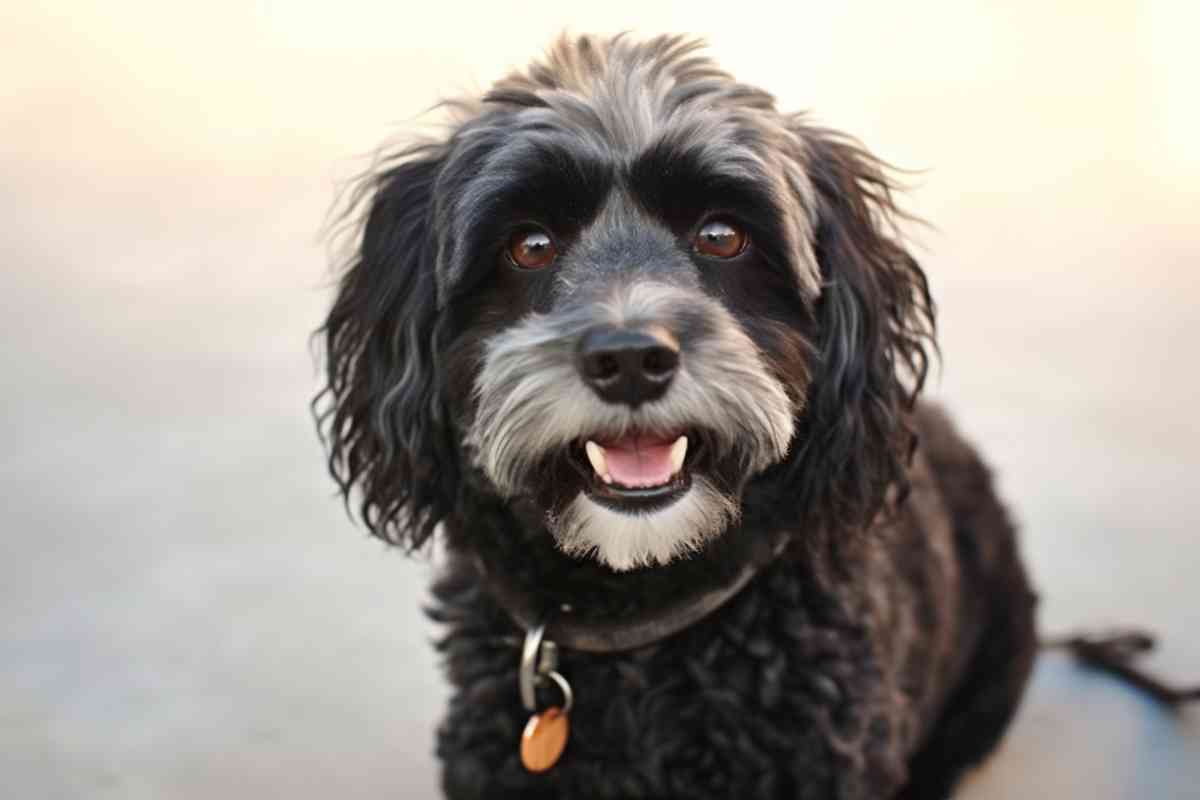
Maltipoo
Positive Traits:
- Affectionate: Maltese dogs are known for their affectionate nature, often forming strong bonds with their owners. If a Maltipoo inherits this trait, it might be an incredibly loving and cuddly companion.
- Intelligence: Poodles are renowned for their intelligence, and a Maltipoo might inherit this sharpness, making them quick learners and relatively easy to train.
- Playfulness: Both the Maltese and Poodle breeds have a playful side. A Maltipoo with this trait would be lively, enjoying games and interactive toys.
Negative Traits:
- Sensitivity: Poodles can be sensitive to changes in their environment or routine. A Maltipoo inheriting this trait might be more prone to anxiety or nervousness in unfamiliar situations.
- Stubbornness: While Maltese dogs are eager to please when they feel like it, they can exhibit a stubborn streak. This trait might require a bit more patience during training sessions.
- Barking: Maltese dogs can be quite vocal, especially when they want attention or sense something amiss. A Maltipoo with this trait might be more prone to excessive barking.
Trainability
Mini Goldendoodles: Born to Retrieve and Please
Both Poodles and Golden Retrievers have a rich history as retrieving dogs. These breeds were trained to work off-leash in highly stimulating environments, fetching game for hunters. Breeders worked hard to create trainability in each purebred dog.
As a result, the Mini Goldendoodle tends to be highly trainable and stable, responding well to positive reinforcement, even just verbal rewards. Their keen intelligence and eagerness to please make them quick learners, always eager to engage in training sessions.
It’s no wonder that the Standard Goldendoodle has become such a popular service dog. Their combination of intelligence, trainability, and gentle temperament makes them ideal companions for those in need.
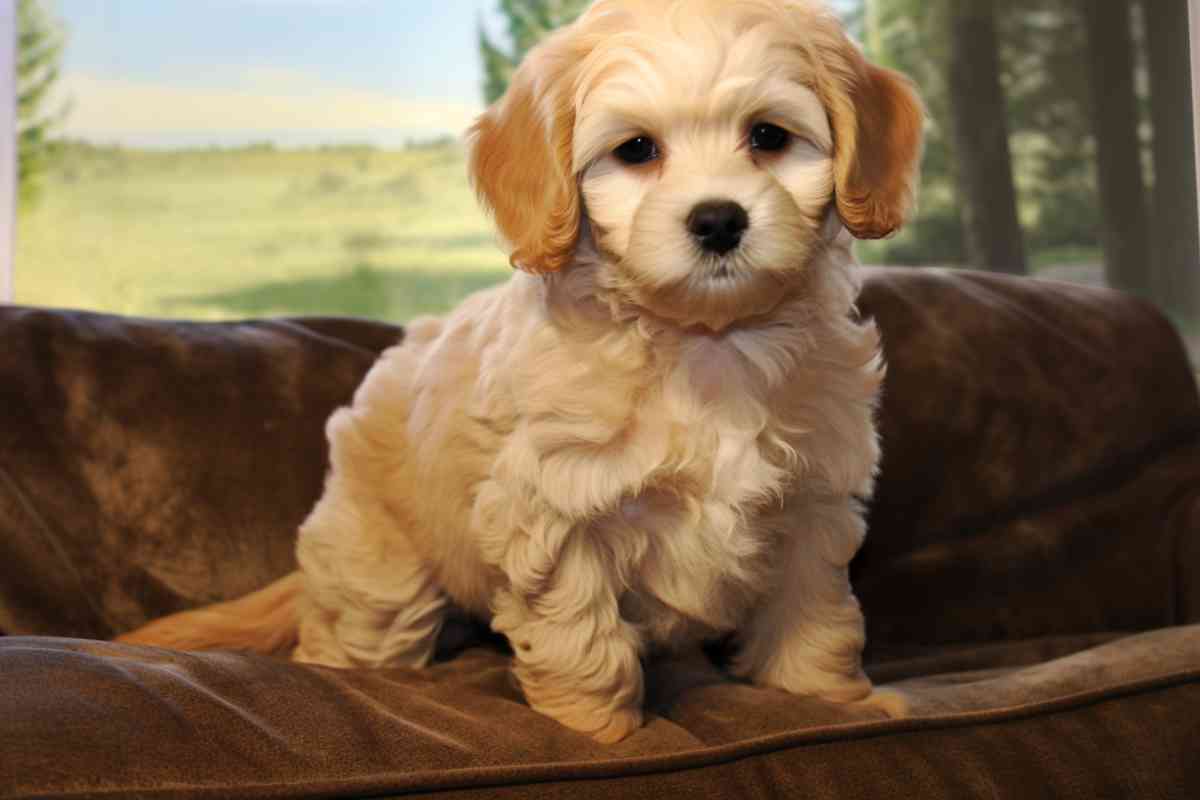
Maltipoos: The Independent Aristocrats
Now, let’s contrast this with the Maltese. The Maltese weren’t fetching game or working in fields. Oh no, they were lounging on the laps of royalty, enjoying a godlike status in their native Malta and beyond.
Picture this: while the Golden Retriever and Poodle ancestors were hard at work fetching ducks in muddy ponds, Maltese were having their silky fur combed and being fed delectible treats by hand while they lounged on the laps of the wealthy and powerful.
This luxurious history has given the Maltese a touch of independence. They’ve always been adored and pampered, so why should they listen to commands now?
When it comes to training, they’re a bit more… let’s say, “selective” about when and how they’ll participate. It’s not that they can’t be trained; they just prefer to do it on their terms.
In Conclusion
Training a Mini Goldendoodle might feel like a collaborative effort, with both you and your pup working towards a common goal. On the other hand, training a Maltipoo might sometimes feel like a negotiation, where you’ll need a bit of patience and a good sense of humor.
Remember, every dog is unique, and while breed tendencies play a role, individual personality, early socialization, and consistent training methods will also influence your training journey.
So, whether you’re training a diligent Goldendoodle or a cheeky Maltipoo, enjoy the process and cherish the bond you’re building with your furry friend!
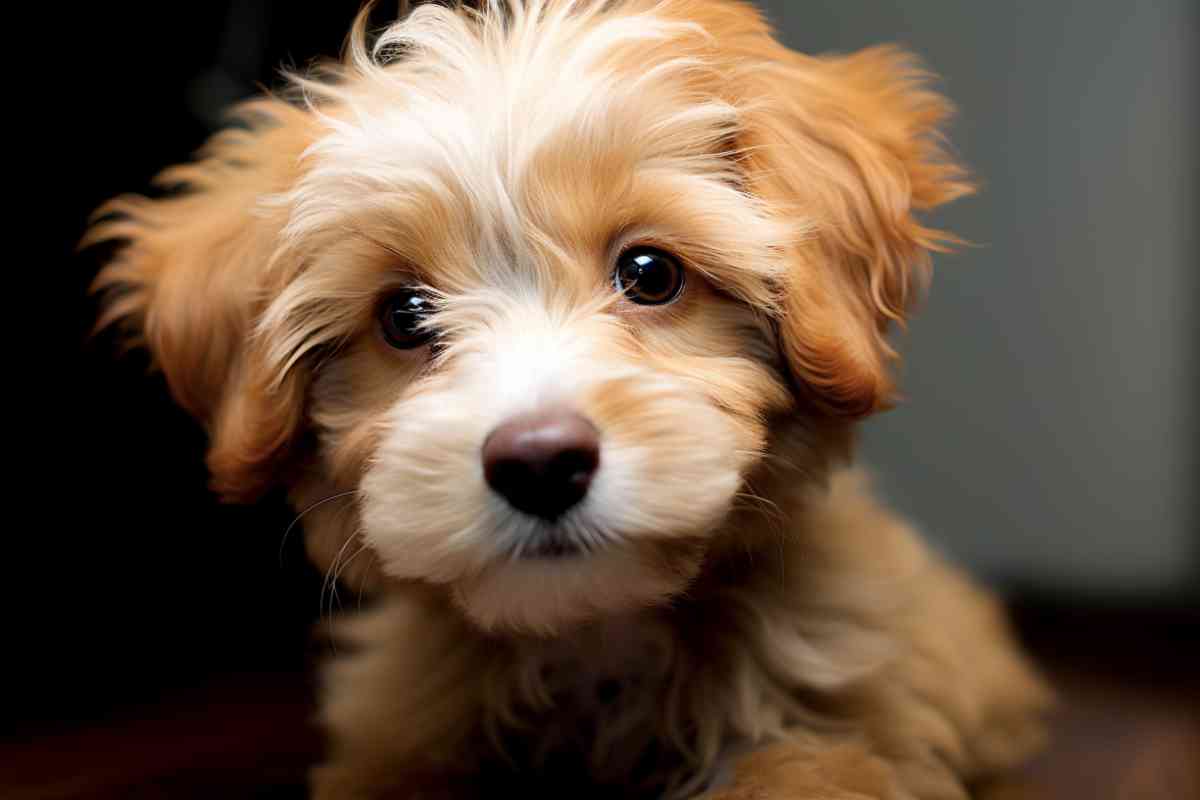
Exercise Needs
Mini Goldendoodles: Active and Engaging
Mini Goldendoodles are larger and naturally have a more significant reservoir of energy to burn. This means they crave active engagement from their families.
Whether it’s a LONG game of fetch, a romp in the yard, or a brisk walk or jog around the neighborhood, these dogs thrive on activity. A couple of play sessions combined with at least one longer walk can keep a Mini Goldendoodle content.
Without adequate exercise, they might channel their energy into less desirable behaviors. So, thinking of skipping that walk? Don’t. Your Goldendoodle might just remind you with an eager nudge or an expectant look… or you may find your shoes are worse for the wear.
Maltipoos: Playful Yet Self-Entertaining
On the other hand, Maltipoos are smaller and often quite content to entertain themselves with a toy. Their size means their energy levels might be satisfied with less intense activity compared to their Goldendoodle counterparts.
A game of tug-of-war or some indoor play can often suffice. However, don’t let their size fool you.
Maltipoos still benefit immensely from regular walks. Not only does it cater to their exercise needs, but it also provides essential socialization and training opportunities.
The Common Ground: Walks are Essential
Regardless of their size or energy levels, both breeds require regular walks. Walks aren’t just about physical exercise; they’re a sensory experience for dogs.
The sights, sounds, and smells they encounter are mentally stimulating. Plus, walks offer invaluable opportunities for training and socialization, helping your dog become well-adjusted and well-mannered.
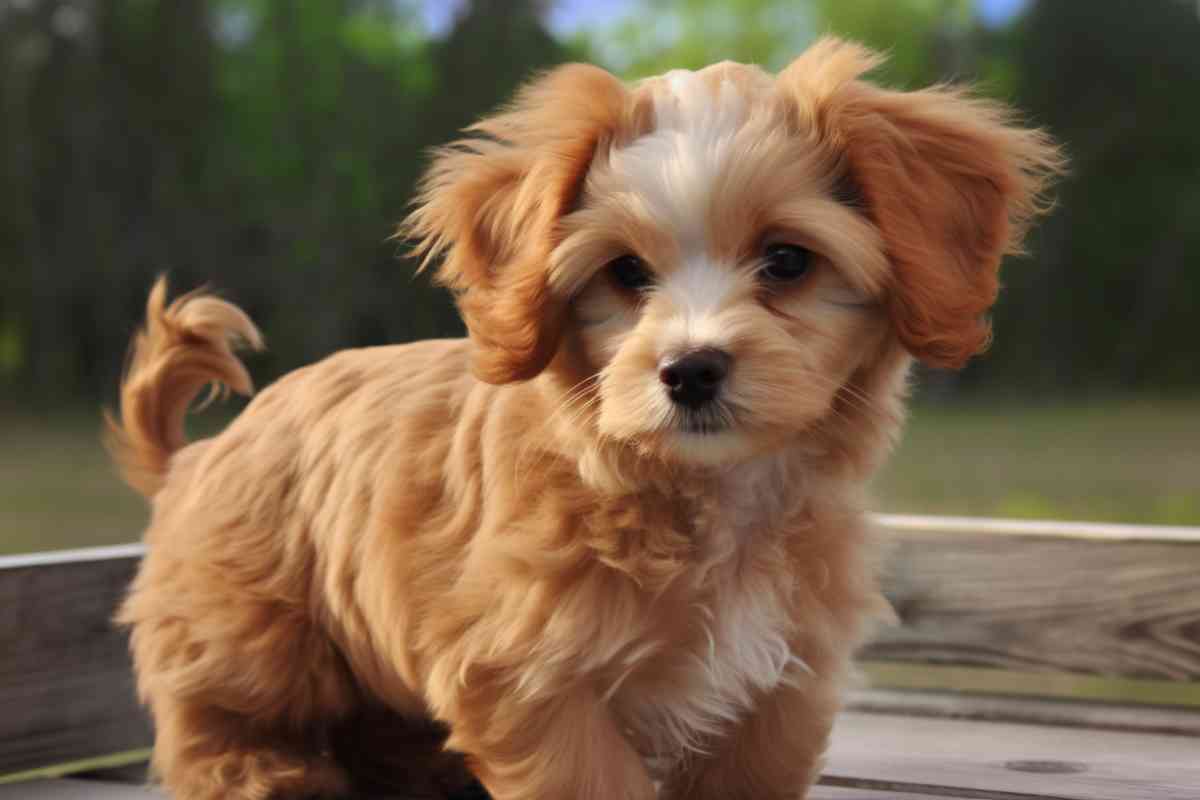
Health
A hybrid CAN get inherit any disease their parents breeds carry. HOWEVER, they are only likely to express that disease if they get a copy from both parents. That means the diseases common to Poodles and the breed they’re doodled with are the ones most likely to be expressed.
Health problems are less likely in doodles than in the poodle parent or the retriever parent, but these poodle mixes can get some health problems. Here are the diseases common to both breeds and most likely to be a problem for your mix.
Mini Goldendoodles
- Hip Dysplasia: A malformation of the hip joint that can lead to arthritis and pain.
- Progressive Retinal Atrophy (PRA): A group of genetic diseases that cause the retina of the eye to degenerate slowly over time, leading to blindness.
- Epilepsy: A neurological disorder that can produce seizures.
- Gastric Dilatation-Volvulus (Bloat): A life-threatening condition where the stomach fills with gas and can twist on itself.
A study by Nationwide found that Goldendoodles are 75.0% less likely to have a claim submitted for cancer compared to Golden Retrievers and Standard Poodles combined, suggesting potential health benefits in crossbreeding.
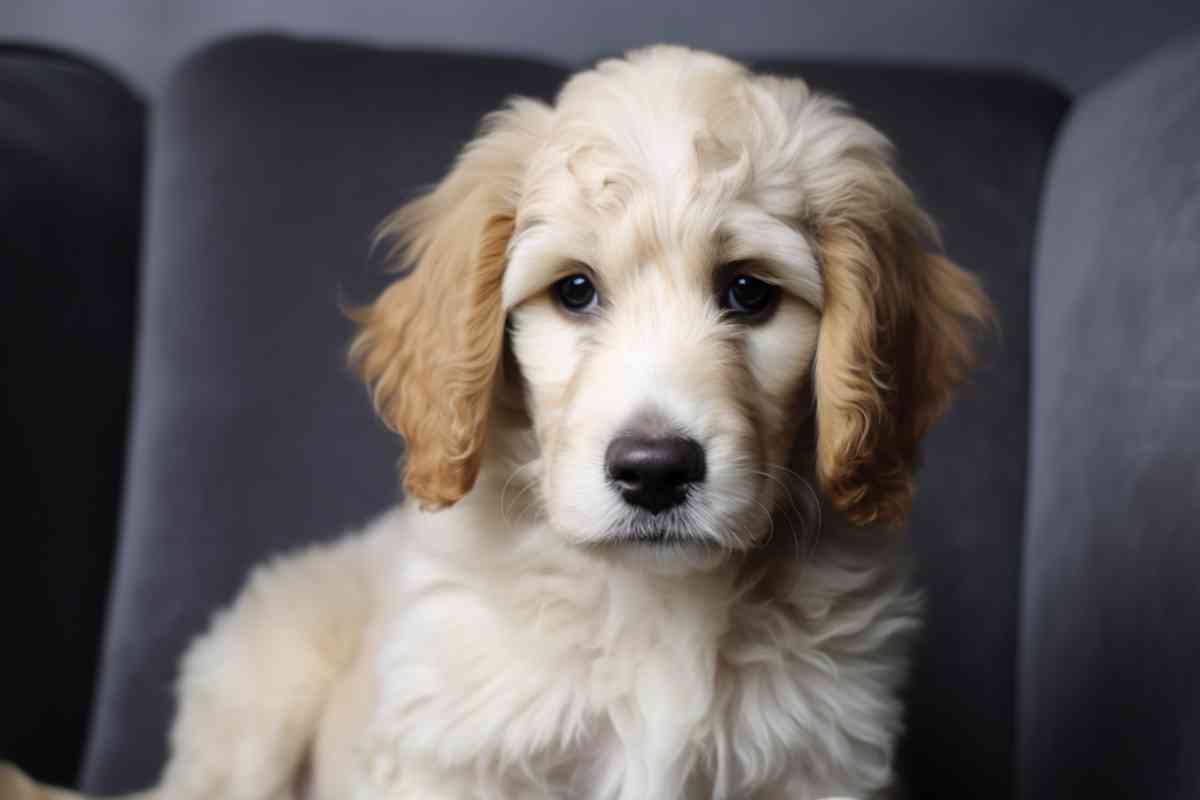
Maltipoos
- Progressive Retinal Atrophy (PRA): A group of genetic diseases that cause the retina of the eye to degenerate slowly over time, leading to blindness.
- Patellar Luxation: A condition where the kneecap (patella) can move out of its normal position, leading to lameness and, in severe cases, arthritis.
- Legg-Calvé-Perthes Disease: A condition where the head of the femur bone in the hip joint starts to degenerate, leading to arthritis and pain. This is more common in Toy and Miniature Poodles and small breeds like the Maltese.
Hybrid Vigor: The concept of hybrid vigor, or heterosis, suggests that crossbred animals (like the F1 generation in dogs) can be healthier than their purebred counterparts.
This is because they have a broader genetic makeup, reducing the chances of inheriting genetic disorders common in purebred lines.
For both Mini Goldendoodles and Maltipoos, the F1 generation might exhibit this hybrid vigor, potentially resulting in fewer health issues than later generations or their purebred parents.
However, it’s essential to note that while hybrid vigor can reduce the risk of certain inherited conditions, it doesn’t guarantee a dog will be free from health issues.

Coat
Hypoallergenic Qualities
Both Maltese and Poodles boast hypoallergenic coats, making them a top choice for allergy sufferers. When these breeds are mixed, the result is a pup that’s highly unlikely to shed.
While the Poodle’s influence can reduce shedding, Mini Goldendoodles may still display varying levels of shedding, especially if they inherit more traits from the Golden Retriever side.
For those keen on a more hypoallergenic option, the F1B Goldendoodle, which has a higher percentage of Poodle genetics, is more likely to express the Poodle’s curly, non-shedding coat.
Coat Types
- Mini Goldendoodles: Their coat can range from the tight curls of a Poodle to the flat coat of a Golden Retriever. However, the most common coat type you’ll find is gentle wavy curls, a perfect blend of both parent breeds.
- Maltipoos: These adorable pups can have a curly Poodle coat or a silky Maltese coat. Yet, just like the Mini Goldendoodles, the most prevalent coat type is those same gentle wavy curls.
A Palette of Colors
Poodles come in a plethora of colors and patterns, and these can be passed down to both Goldendoodles and Maltipoos. However, given that Golden Retrievers always sport a golden hue and Maltese are consistently white, Goldendoodles often lean towards the golden spectrum. In contrast, Maltipoos tend to be on the lighter, creamier side.
The Fading Gene
An interesting genetic twist from the Poodle side is the fading gene. This gene can cause the coat color to change over time. So, don’t be surprised if your vibrant puppy’s color lightens or shifts as they grow.
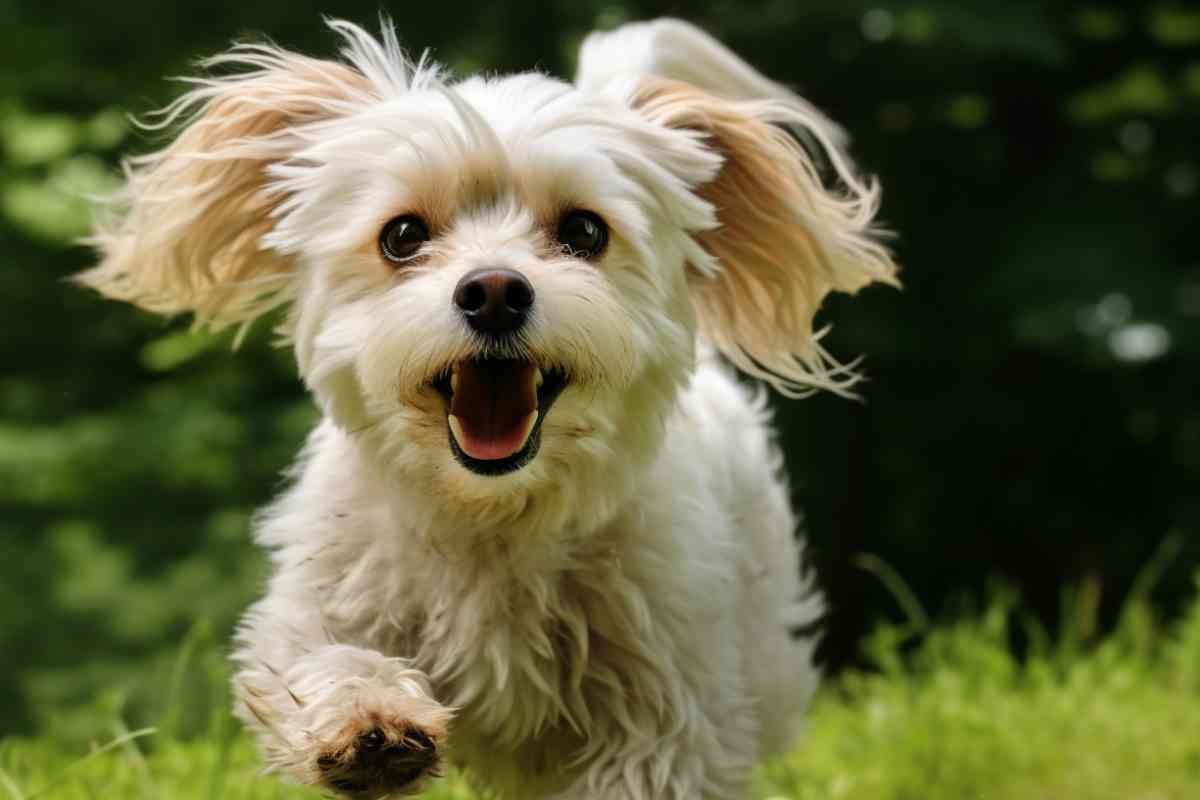
Grooming
Maltipoos: Consistent Coats with Minimal Shedding
Maltipoos are blessed with a coat that doesn’t shed. Their coat is relatively consistent, often showcasing a wavy texture.
Grooming Routine:
- Brushing: A quick daily brushing all the way to the roots is essential to prevent tangles and mats.
- Trimming: Their coat can be cropped close or shaped to reduce the need for frequent brushing. A monthly clip will keep their coat looking neat and manageable.
Goldendoodles: A Mix that Demands Attention
Goldendoodles, with their blend of straight fur from the Golden Retriever and curly hair from the Poodle, have a coat that’s more prone to matting. The mix can lead to a unique texture that requires regular attention.
- Shedding: Most Goldendoodles shed somewhat, and the shed hair often gets trapped in the coat, leading to increased matting.
- Brushing: A thorough daily brushing is crucial to prevent mats and tangles. If neglected, you might find yourself dealing with stubborn mats that are tough to remove.
- Trimming: Monthly trims are a must to keep their coat in top shape and keep the coat short enough to maintain.
General Care for Both Breeds:
- Ears: Regular cleaning and possibly hair removal is essential to prevent infections, especially since both breeds can have floppy ears that trap moisture.
- Teeth: Brushing their teeth at least monthly helps prevent dental issues and bad breath.
- Nails: Depending on their activity level, nail trims might be needed more frequently than once a month. Regular trims prevent overgrowth, which can be painful and lead to posture issues.
Spaying, Neutering, and Breeding
Breeding Challenges with Hybrids: Breeding hybrid dogs, especially beyond the first generation (F1), can be challenging.
It’s difficult to consistently produce healthy hybrids with desirable traits. This is because the genetic variability increases with each subsequent generation, making it harder to predict outcomes.
Unless an individual is prepared to conduct thorough health and genetic testing to find a suitable breeding partner, it’s best not to attempt to breed the dog.
However, that doesn’t necessarily mean spaying or neutering is in your dog’s best interest.
Health Implications of Spaying and Neutering: A study titled “Assisting Decision-Making on Age of Neutering for 35 Breeds of Dogs: Associated Joint Disorders, Cancers, and Urinary Incontinence” provides valuable insights into the pros and cons of neutering at different ages:
- Joint Disorders: Neutering before a year of age in certain breeds was associated with increased risks of joint disorders, such as hip dysplasia, cranial cruciate ligament tear or rupture, and elbow dysplasia. The risk was particularly high for dogs neutered by 6 months of age. Since Goldendoodles may be prone to hip dysplasia and Maltipoos to Patellar Luxation, this is an important point to consider.
- Cancers: In some breeds, neutering was associated with an increased risk of certain cancers, including lymphoma, mast cell tumor, hemangiosarcoma, and osteosarcoma. For instance, in female Golden Retrievers, neutering at any age was linked to a higher risk of these cancers. Goldendoodle owners should keep this in consideration given the prevalence of cancer in the breed.
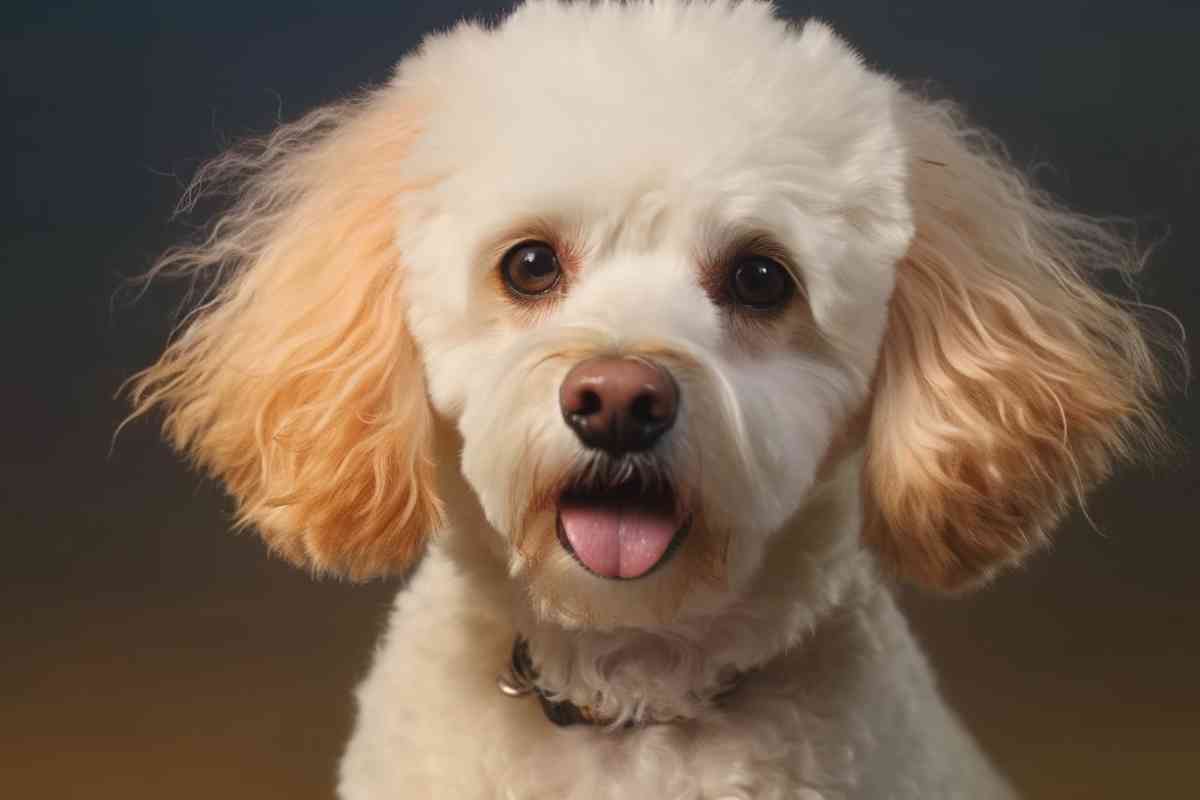
What’s the Right Dog for Your Family?
Choosing the right dog for your home is a significant decision. Both the Maltipoo and the Goldendoodle have their unique charms and quirks. Let’s dive into a comparison to help you decide which breed aligns best with your lifestyle.
Goldendoodles: The Eager-to-Please Companions
Goldendoodles are known for their easy-going nature and eagerness to please. Their larger and sturdier build makes them an excellent choice for families, especially those with children. Their resilience and friendly demeanor mean they can thrive in a lively, boisterous environment.
However, with their affable nature comes a need for companionship. Goldendoodles tend to be needier, requiring more time, training, and engagement from their owners.
If left alone for extended periods, they might develop separation anxiety or unwanted behaviors. So, if you’re considering a Goldendoodle, be prepared to invest time in training and bonding.

Maltipoos: The Independent Apartment Dwellers
Maltipoos, on the other hand, march to the beat of their own drum. Their independent streak means they’re often content playing by themselves and require less hands-on training than Goldendoodles.
This trait makes them an excellent choice for individuals or families who might not have the time or energy to engage in extensive training sessions.
Their smaller size and non-shedding coat make Maltipoos ideal for apartment living. They take up less space, and you won’t find tufts of fur on your furniture or clothes.
But don’t let their size fool you. Maltipoos are often more suspicious by nature. They’re quick to sound the alarm with a bark if they sense something amiss, making them surprisingly good guard dogs.
In contrast, a Goldendoodle might just wag its tail and make a new friend.
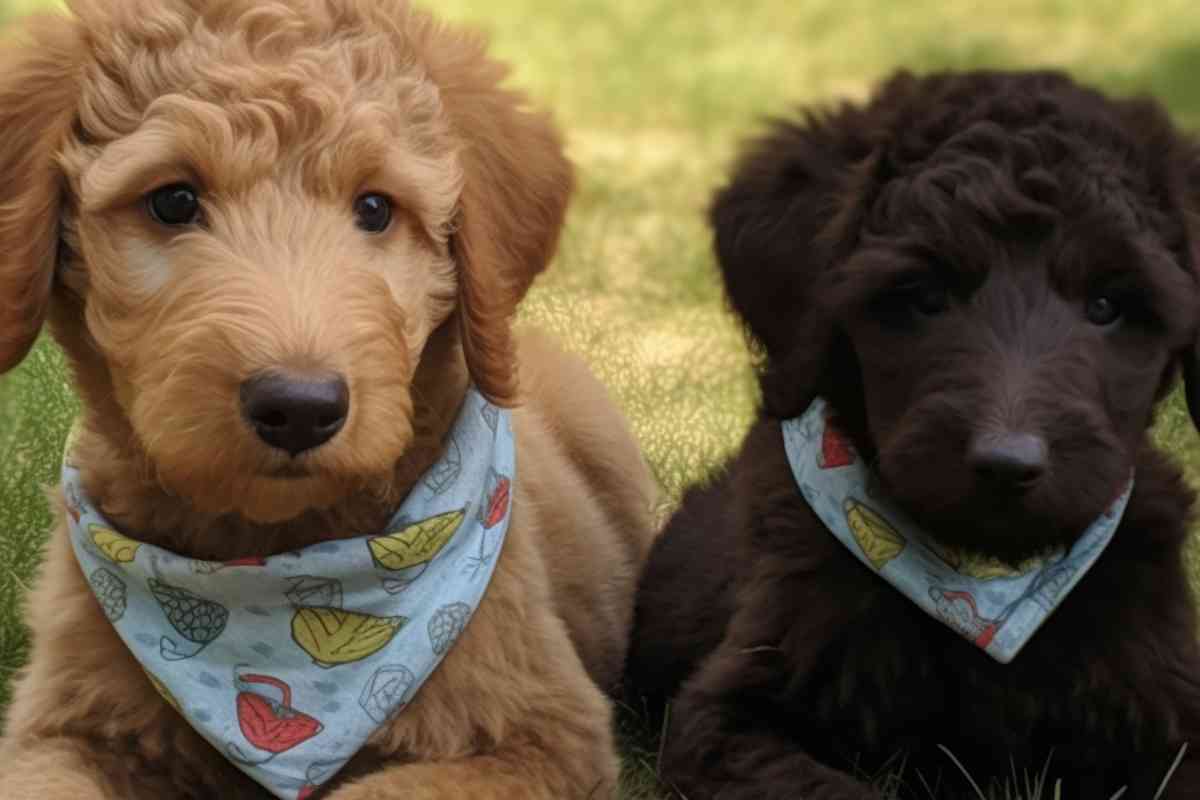
Frequently Asked Questions
What are the size differences between Mini Goldendoodles and Maltipoos?
Mini Goldendoodles are typically larger than Maltipoos. Mini Goldendoodles can weigh anywhere from 15 to 45 pounds, while Maltipoos usually weigh between 5 and 20 pounds.
What are the pros and cons of owning a Maltipoo?
Pros:
- Maltipoos are hypoallergenic and shed very little, making them a good choice for people with allergies.
- They are generally very friendly and affectionate dogs.
- Maltipoos are intelligent and easy to train.
Cons:
- Maltipoos can be prone to separation anxiety and may not do well if left alone for long periods of time.
- They can be difficult to housebreak.
- Maltipoos may have health issues such as dental problems and eye infections.
What is the average lifespan of a Mini Goldendoodle?
The average lifespan of a Mini Goldendoodle is between 10 and 15 years.
How do Mini Goldendoodles and Maltipoos differ in temperament?
Mini Goldendoodles are generally more energetic and outgoing than Maltipoos. They are also more social and tend to get along well with other dogs and people. Maltipoos are usually more reserved and may be more prone to anxiety.
What is the average price range for a Mini Goldendoodle or Maltipoo?
The average price range for a Mini Goldendoodle is between $1,500 and $3,000, while the average price range for a Maltipoo is between $1,000 and $2,500.
Are Mini Goldendoodles or Maltipoos better suited for apartment living?
Both Mini Goldendoodles and Maltipoos can do well in apartments, but Maltipoos may be better suited for apartment living due to their smaller size and lower energy levels. It is important to note that both breeds still require exercise and mental stimulation, even in a smaller living space.